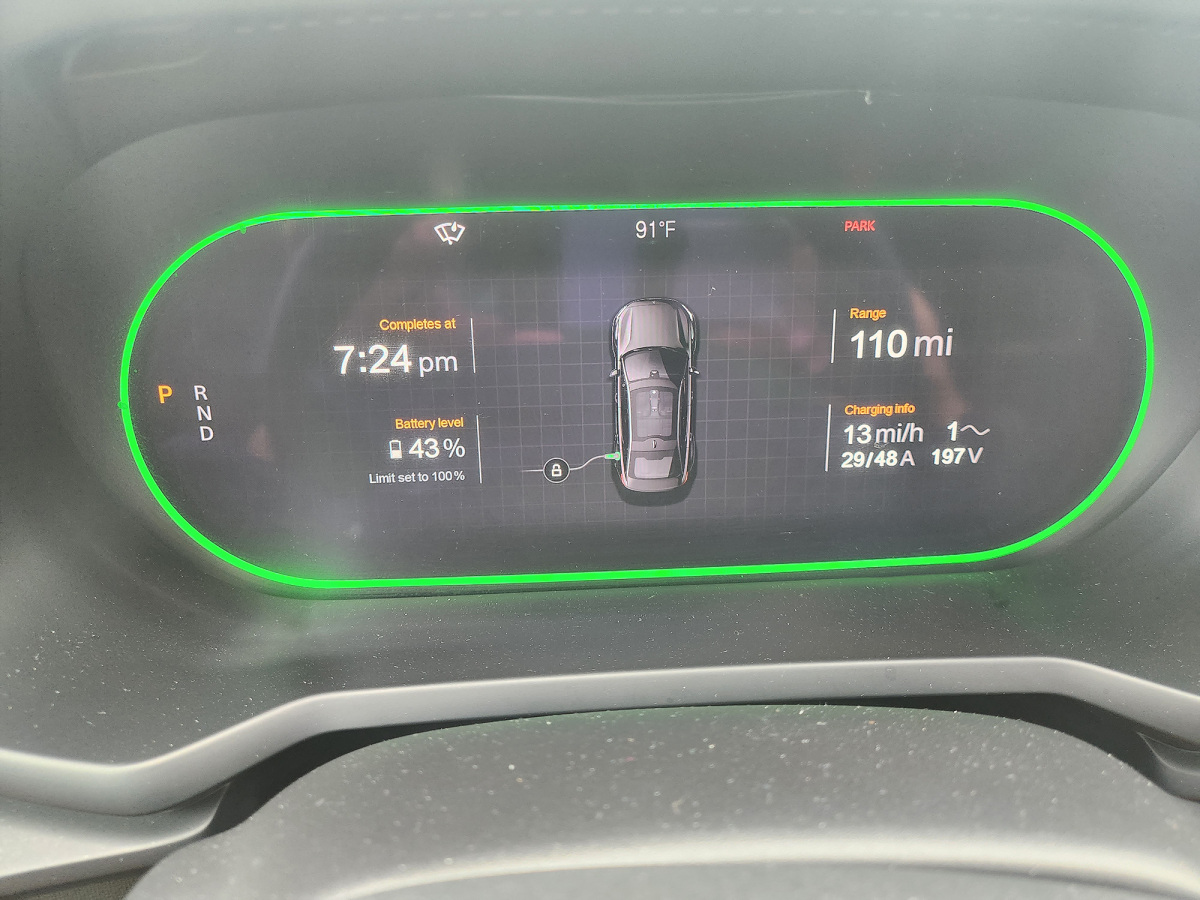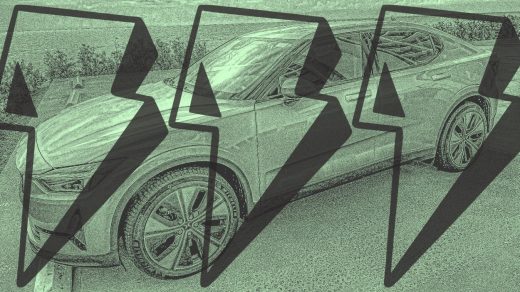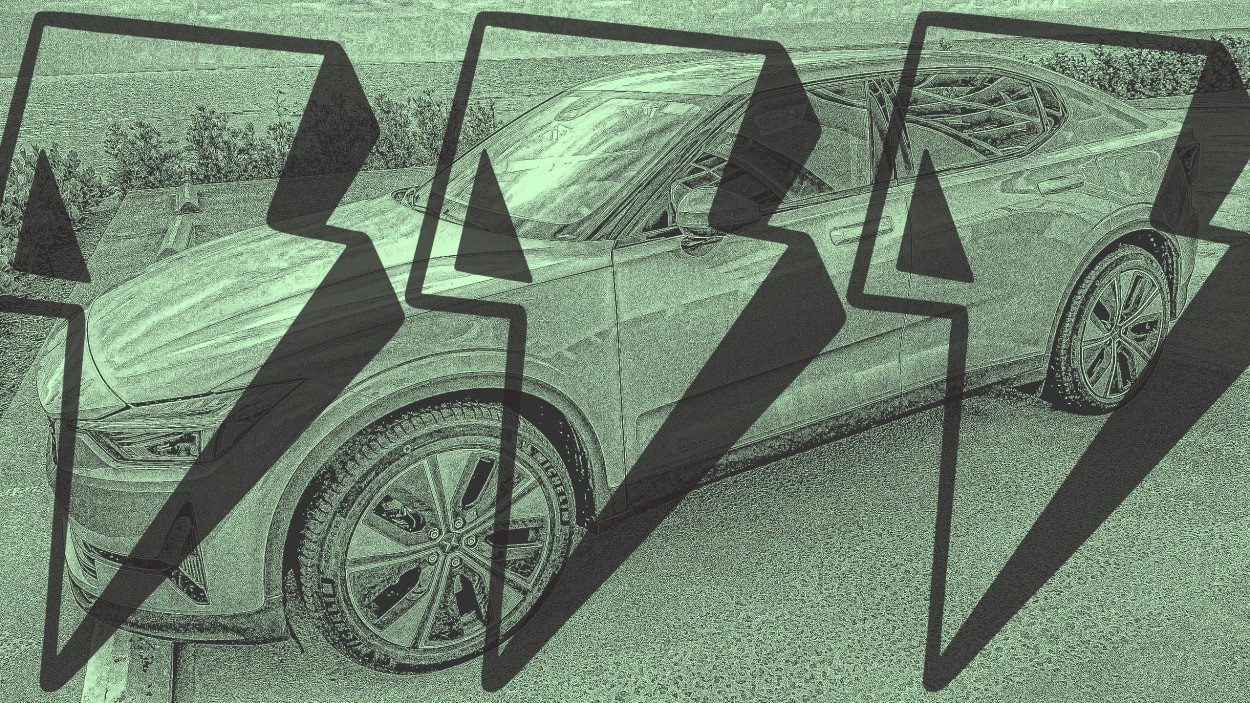What it’s really like to rent an electric car
By Doug Aamoth
“If you could have any car you wanted, what would you get?” I’m not a car guy, so I didn’t have an immediate answer to my wife’s question.
I work from home. I drive maybe a couple thousand miles a year, mostly around town. Aside from having a car that doesn’t break down and fits my 6-foot-4-inch frame comfortably, I’ve put very little thought into top-shelf transportation.
I am a tech guy, though, so my answer ended up being something like, “I don’t know. Maybe an electric car with a cool, huge tablet in the dash.”
Fast forward to today, and I’m in the middle of a three-day rental—a Polestar 2—that I drove from the Fort Lauderdale airport to Naples. Just over 200 miles, round trip. I wasn’t looking to rent an EV, but it was $47 a day, which was the cheapest option at the time. Other than my nine-year-old son chiding me relentlessly for renting an EV that wasn’t a Tesla, what’s the catch?
I have several thoughts, the foremost of which is that I’m ill-equipped to offer an actual review of the car itself: Thankfully, Mark Wilson is. He likes it and, for the record, so do I.
My other thoughts are partially about what it’s like to go from driving a standard car to an electric car—but even more so what it’s like renting an electric car compared to a regular one. So, if you think you might be interested in checking out the next generation of automotive travel for a few days, here are some things to consider.
It handles like magic
Perhaps the most startling revelation, as I pull out of the Hertz rental lot and onto the open road, is that the car seems to be much more of an immediate extension of my intentions than a gas car.
Hitting the pedal in a gas car results in a tangible moment where the gas catches up with the rest of the car to propel it forward. The Polestar responds immediately, almost jarringly so.
Same with turning. Changing lanes and scooting around the Naples streets once I get off the highway just feels more natural. I can’t tell if that’s because I’m driving a $60,000 car or because it’s electric, though. Again: I’m not a car guy.
But it just feels really good. The act of driving seems as new and exciting as it did for 15-year-old Doug when he first got his learner’s permit, only this time, I actually know how to drive and can appreciate all that goes into it.

The tech is cool but can be overwhelming
Before I even get the car out of the Hertz complex, I have a newfound respect for the wonderfully dumb interfaces in regular cars. At the most complex, you’ve got access to Android Auto or Apple CarPlay, plus familiar volume knobs and radio presets.
The tablet in the Polestar is very . . . tablet-y. It’s huge and beautiful, but I find it pretty distracting at first.
It takes several minutes to connect my phone, step through an onboarding process to set up navigation, and get the rest of my digital ducks in a row before I can put the car in reverse. Every rental car I’ve ever driven has taken a fraction of the time.
About 20 minutes into the trip, while I’m blazing down the highway at 75 miles per hour, I’m trying to get the satellite radio working. The app is up, music is “playing,” but nothing’s coming out of the speakers. The tablet suddenly goes dark and, after what feels like an eternity, it eventually reboots.
When it finally comes back to life, there’s the onboarding walkthrough again. All the satellite radio stations I had favorited are gone. I manage to get Google Maps up and running again, but I’ve forgotten the address I’d entered and it wasn’t saved.

Range anxiety is real
Now that I’ve been on the highway a while, the whole range anxiety phenomenon is far more surprising than I thought it would be. Think about your gas car, if you have one. When the tank is halfway full, you probably think nothing of it.
But in an electric car, watching the battery slowly but surely drain from 97% out of the Hertz garage toward 50% while on the highway made me feel like I do when my phone battery dips below 50% in the early afternoon after heavy use.
We stop about a third of the way across Alligator Alley—the charmingly desolate 100-mile stretch between Fort Lauderdale and Naples—at a modern, large gas station purpose built to cater to road trippers. But there isn’t a charging station in sight despite gas pumps galore.
Checking the charging station locator on the car’s giant tablet reveals a handful of charging stations near Fort Lauderdale and a handful in Naples. I’ll have to charge up the battery later.

(Mis)adventures in charging
It’s 9:30 on Tuesday morning and Hurricane Idalia is bearing down on Florida. I’ve got about an hour and a half before the rain starts. I should get out and charge this car, because we’re leaving tomorrow and it’s supposed to rain all day. We’re 11 months removed from Hurricane Ian, which Naples is still recovering from, so everyone’s more than a little skittish.
I get in the car, fire up Google Maps, and hit the charging station locator button. I’ve got some options, two of which are reasonably close by but none of which are exactly convenient.
The first is a “Slow” charging station about eight minutes away. The second is a “Medium” charging station about 12 minutes away. There’s also a place that has “Super” and “Very Fast” charging, but it’s 21 minutes away.
This is already too much math. If I save four minutes by going to the Slow place, would I make it up by spending that four minutes to go farther to the Medium place? I have no idea what the difference is between Slow and Medium.
Medium it is. Let’s get this show on the road. I dutifully follow the GPS directions to the Medium station and find myself in the middle of a residential neighborhood with nary a charger in sight. I think I’m supposed to be at a Porsche dealership instead. Strike one.
By now, I’m closer to the Super/Very fast chargers, so I decide to try that instead. On my way there, I see a Porsche dealership on the other side of the divided highway. It’s got one charging kiosk and someone’s using it. The map said there should have been three chargers. Is that even where I was supposed to go anyway?
I get to my destination, and it’s in the back corner of Walmart parking lot. Everyone on Planet Earth is there—ever been to a Walmart before a hurricane?
There’s an overturned shopping cart perfectly situated between two of the charging kiosks, probably for the best since the parking lot is nearing capacity. There are four kiosks total, not seven as the map indicated.
I get out of the car, remove the shopping cart, delicately back into a charging space, get out of the car again, and see that the kiosk says, “Members only—credit card reader unavailable”; huh?
I check the second kiosk. Same message. I check a third kiosk: out of order. I check the fourth and final kiosk: out of order. Strike two.
Back to the map. There’s a Medium charger about five minutes away. I’ve navigated to a gated community with the gate shut tight. Strike three.
There’s one by the Naples airport. Except there isn’t. I’m in a CarMax parking lot. No chargers. Strike four.
It’s now around 10:15 a.m., the sky is turning purple, and I’m running out of charging spots that don’t exist in the first place. I manage to track one down at a BMW dealership. It’s a Slow charger. I’ll take it.
I get out, credit card in hand, only to find that this one, too, is members only. What’s going on here? Screw it: I’m ready to become a member. I’ll sign up to sell Amway at this point. Just get me going.
I create an account, enter my credit card number, push my phone against the kiosk. Finally, it’s time to charge.
It’s just like pumping gas at first, except far less smelly. I get in the car while it’s charging up and, surely hallucinating, see that, while it’s 10:24 in the morning, it’s going to take until 7:24 p.m.—nine hours—to fully charge. I now understand what Slow means. Strike five.
Since I’ve resigned to starting unnecessary memberships, I decide it’s time to head back to Walmart.
Everything is depressingly funny now. On the way there, a Corvette rear ends another Corvette and both Corvette owners get out in the middle of a five-lane road to hash it out, blocking two lanes, including mine.
I pull into the parking lot and get honked at by someone in what I can only assume is a Ford F750 or however big they get. He’s surprised by me slowing down in front of the charging station nobody ever uses. My fault, I guess. The irony.
The parking lot is somehow twice as full now. There’s a guy charging his car on the one working charger. I pull into the second working charger. He seems delighted to see me.
Another app to download. Another credit card form to fill out. Do I want to pay $7 a month or pay as I go? I can’t take it anymore. The other guy wants to chat because we both have EVs. Not now, buddy. Get me out of here.
I sit there for 12 minutes. My bladder has had enough. I can’t go into the Walmart to use the bathroom. The battery is at 65%—good enough to make it back to Fort Lauderdale. I’ve spent $10.08 and an hour and a half of my life doing this.
Every intention I had of charging the car back up to 97%—the level it was at when I first got in it—has died a terrible, terrible death. Hertz has nothing in my rental agreement about how to return electric cars. I roll the dice and turn it in at 10% the next day.
I haven’t seen any charges yet, but charge me whatever you like, Hertz. I missed one flight in my life 20 years ago and I’ve been anxious about getting to the airport on time ever since. I can’t do all this again in Fort Lauderdale, especially during a hurricane.
‘If you could have any car you wanted . . . ‘
Back to trying to answer my wife’s question.
I’m still a tech guy. The jury’s still out about whether or not I’m an electric car guy yet. I’m not an electric car rental guy, though. That’s for sure.
Navigating an in-car tablet still takes one or two too many taps for me. Watching the battery drain is horrifying. Finding a viable charging station would infuriate even the Dalai Lama.
But man, do I already miss zipping around town with near zero latency between my neural intentions and the car’s reactions. Maybe by the time I’m in a position to consider actually buying an EV, the other stuff will have improved.
(34)



